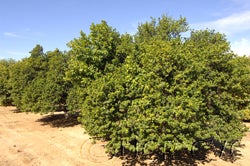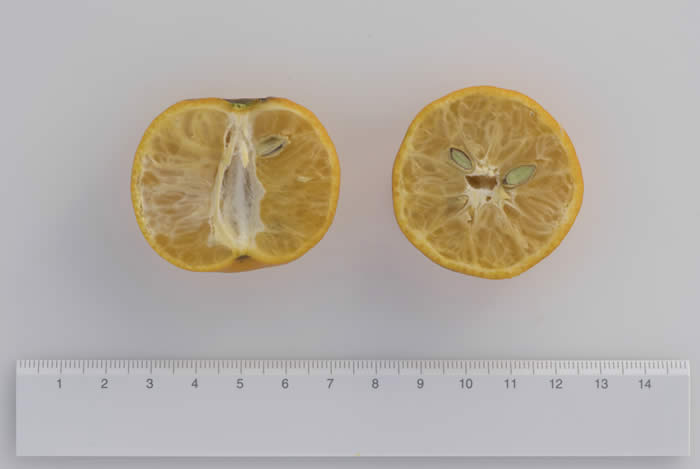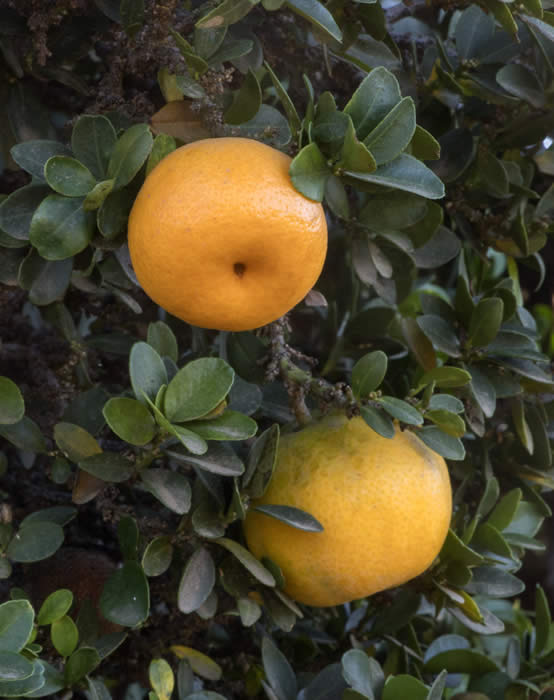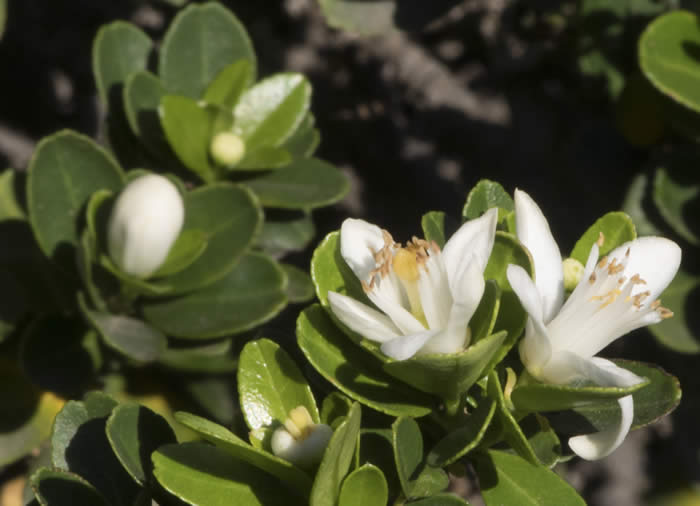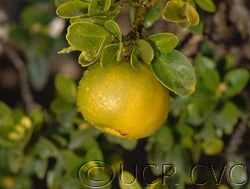Citrus myrtifolia Rafinesque
CRC 3728
PI 539167
VI 1022
Source
Received as budwood from Dr. Joe Furr, USDA Date & Citrus Station, Indio, Ca, 1970.
Parentage/origins
Parents unknown.
Rootstocks of accession
Carrizo citrange, C-35 citrange
Season of ripeness at Riverside
January to March
Notes and observations
2/26/1988, EMN: Darker green foliage than Chinotto at this time. An attractive compact tree but few fruit. Fruit similar to Chinotto, may be slightly smaller, slightly smoother rind, and slightly lighter rind color. Interior similar to Chinotto but coarser, dryer, more sour.
2/11/2008, DK: Noelle Barkley et al., Assessing genetic diversity, Theor Appl Genet (2006) 112: 1519Ð1531: Bar graph on p. 325 shows that Chinotto 3728 [#333 on her chart] is of about 40% pummelo, and 40% citron--more citron than is indicated for most other sour orange accessions.
Description from The Citrus Industry Vol. 1 (1967)
"Because it somewhat resembles the sour orange, the myrtle-leaf orange (chinotto of Italy, chinois of France) is commonly considered to be a botanical variety of C. aurantium L. Indeed, the presumption is that the myrtle-leaf orange originated as a mutation from the sour orange. The differences are sufficiently great and the degree of variation exhibited so wide, however, as to appear to justify separate species standing.
The several forms of the myrtle-leaf orange are all characterized by low vigor, slow growth, and small trees with brachytic thornless branchlets, the internodes of which are so short that the leaves are crowded and the growth habit more or less dense and compact. The leaves are very small, dark green, and usually but not always lanceolate-pointed. The fruits are small, oblate to round, with more or less rough rind surface and orange to deep orange in color. The seed content is highly variable and ranges from few or no seeds to many.
The myrtle-leaf orange has been known for some centuries in the Mediterranean and, as its Italian and French names imply, was presumably introduced from China. It is grown primarily as an ornamental though the fruits of certain forms have long been prized and used for candying or "crystallizing" whole. Its commercial culture appears to be confined largely to the province of Liguria, Italy. Elsewhere it is an attractive and useful ornamental.
At least four forms or varieties of myrtle-leaf orange are recognized and there are doubtless several clones of each. Three of these forms have leaves which resemble those of the myrtle; the leaves of the fourth are more like those of the boxwood."
Availability
Commercially available in California through the Citrus Clonal Protection Program. Click here to order budwood.
USDA Germplasm Resources Information Network page for Chinotto sour orange (CRC 3728)
